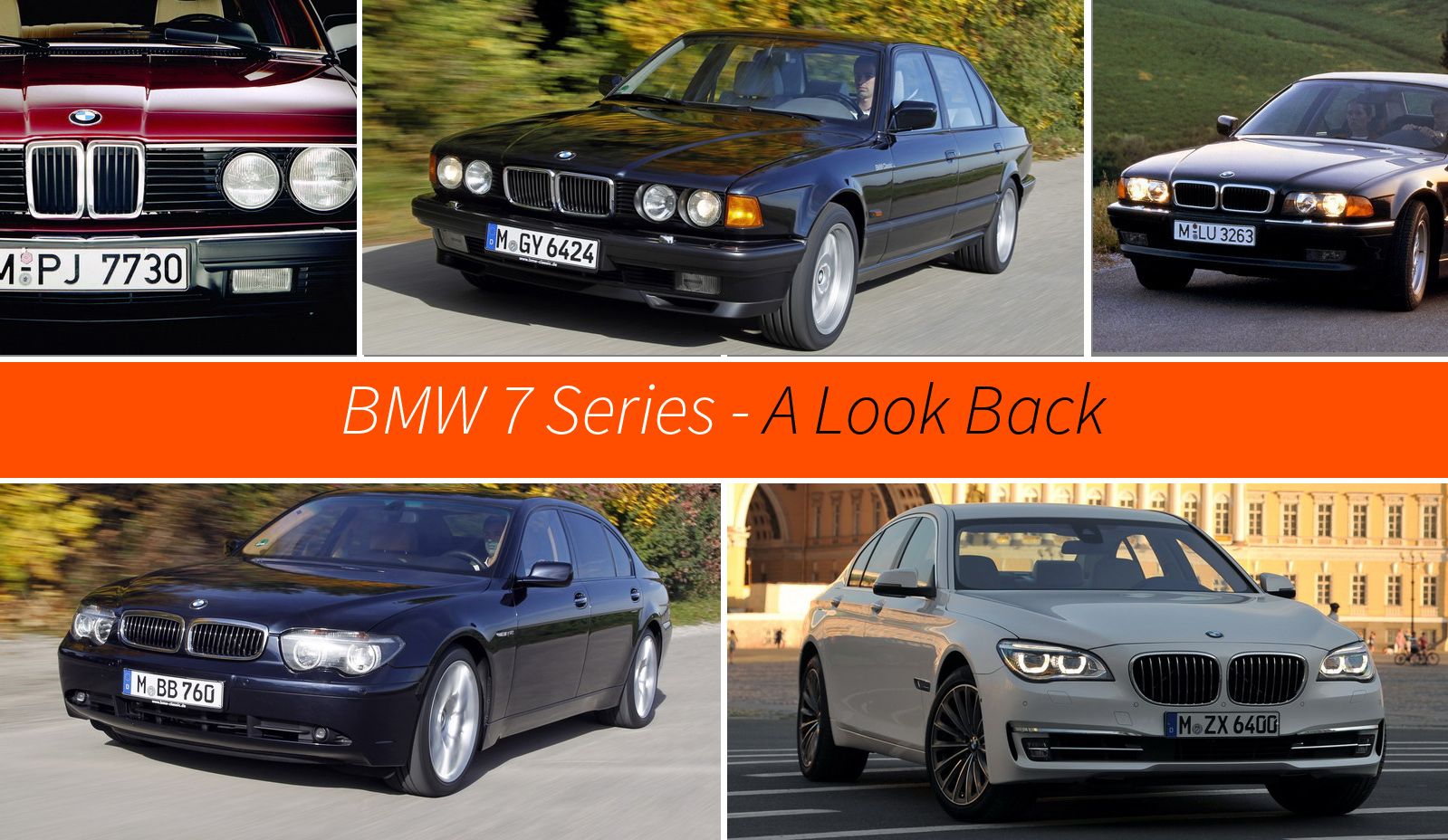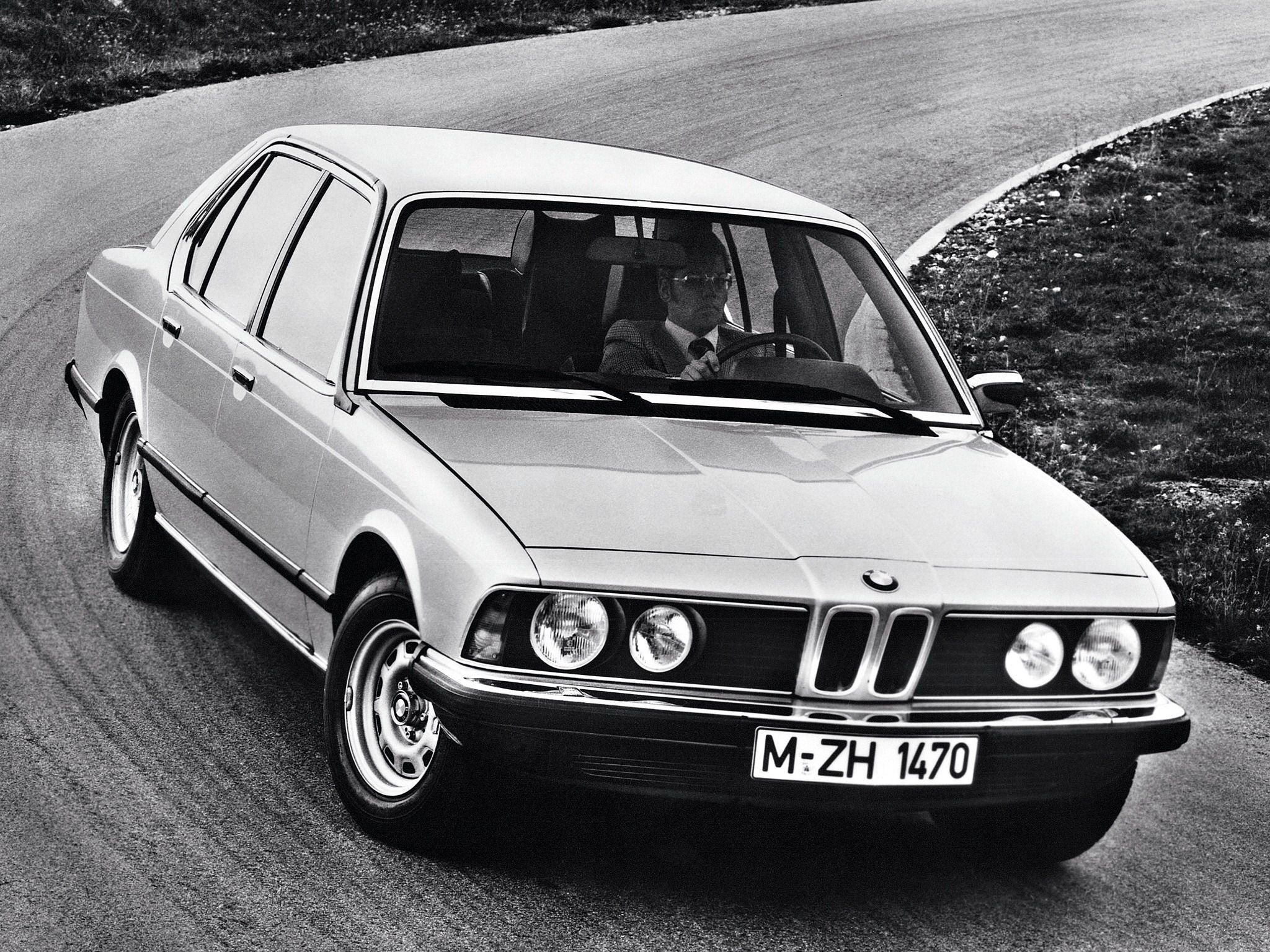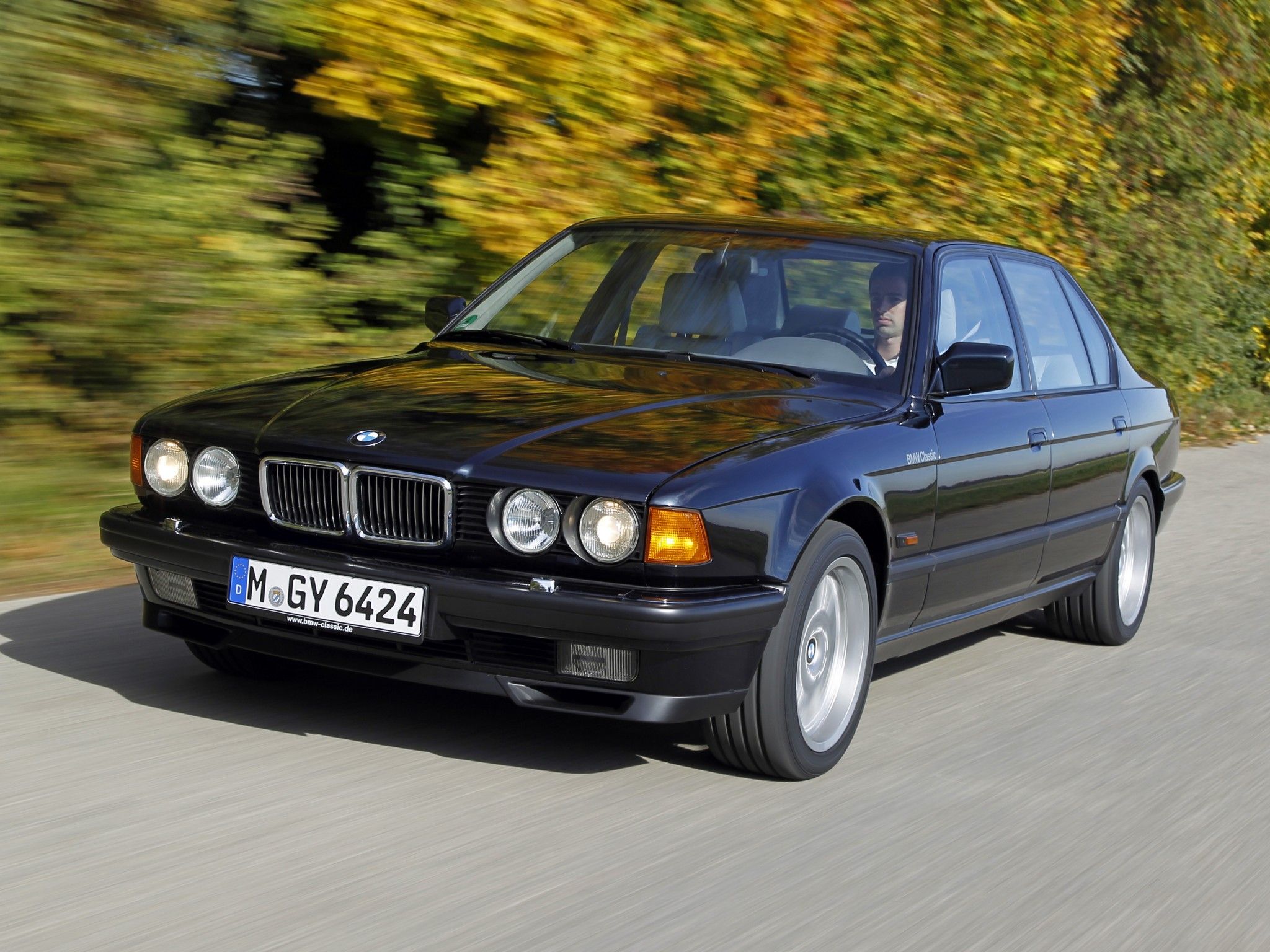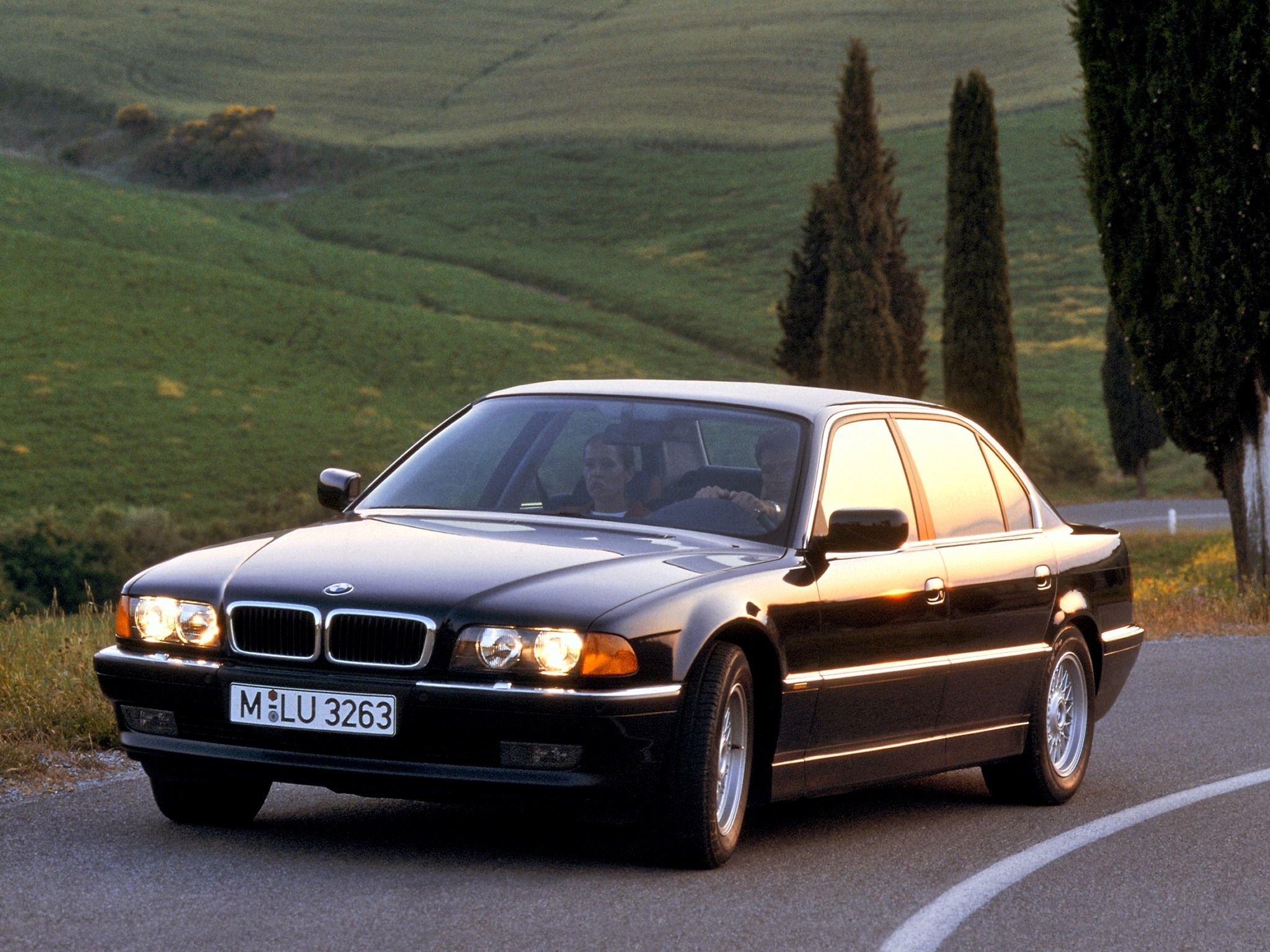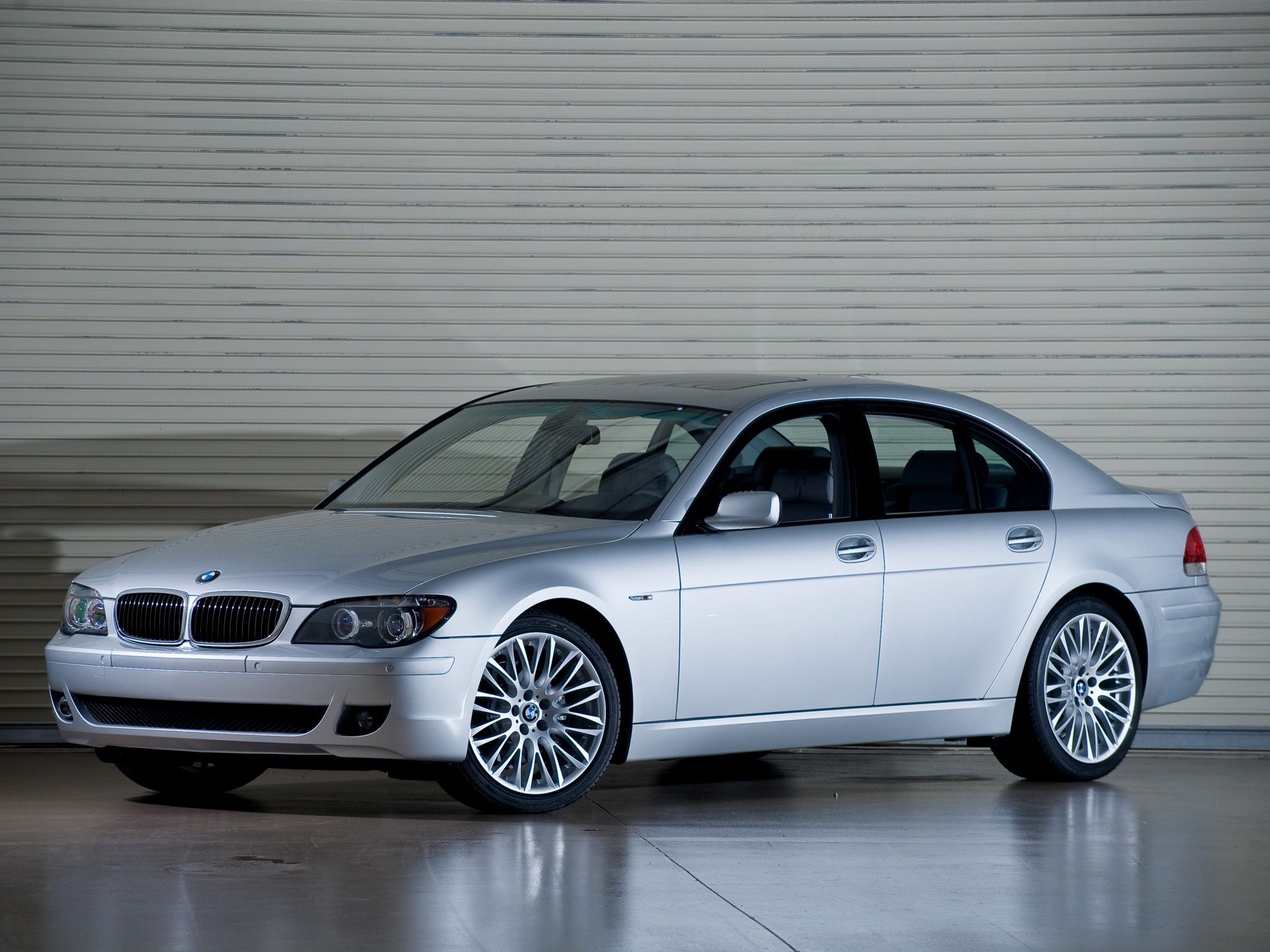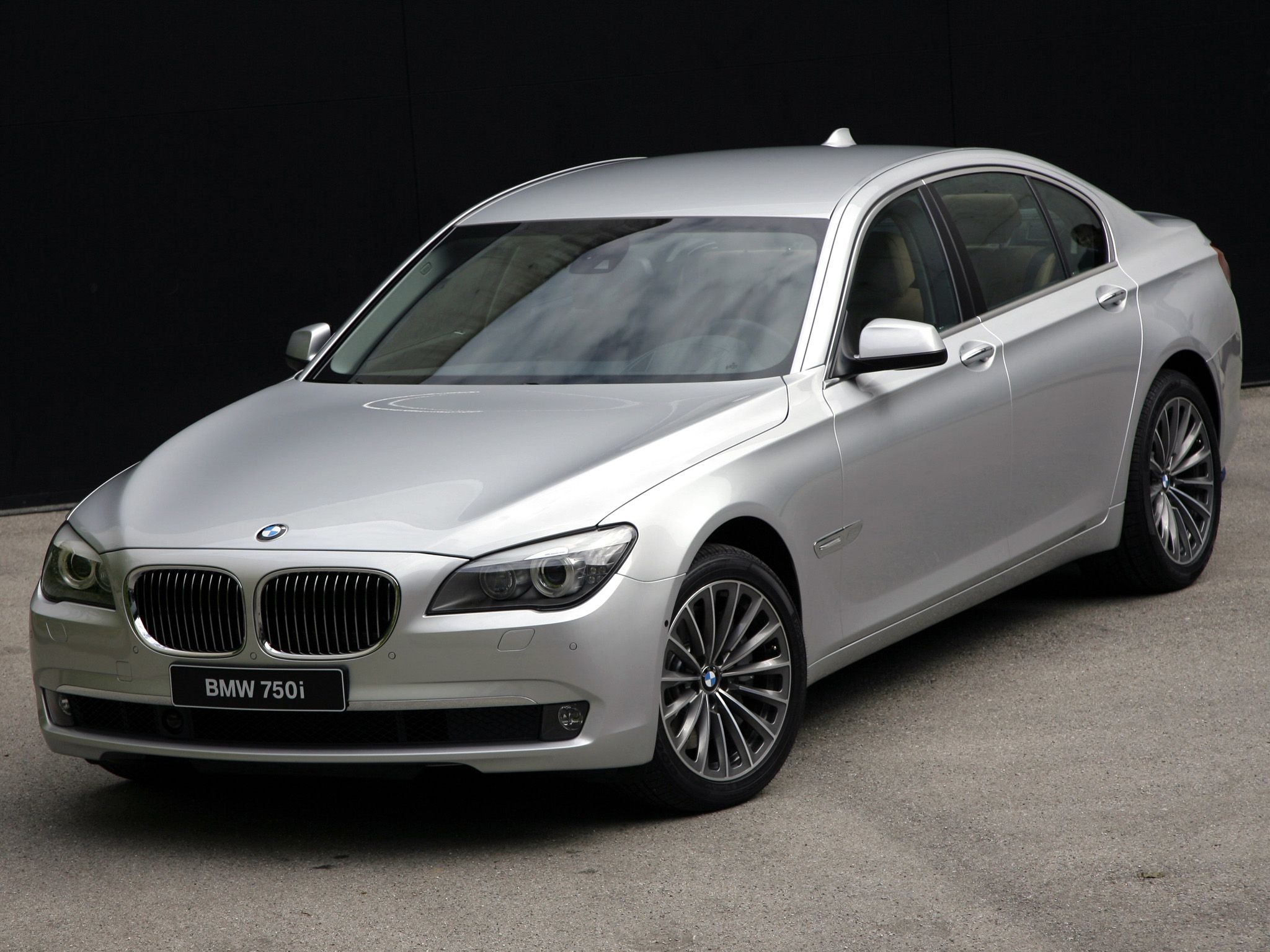BMW->ke178 today is widely regarded as one of leading premium car makers, battling for glory with the likes of Mercedes-Benz,->ke187 Audi,->ke14 and Cadillac.->ke18 But it wasn't always like that. The brand started life as an aircraft engine manufacturer in 1916 and switched to motorcycles in 1923. It was only in 1927 that BMW built its first vehicle, the 3/15 DA-1 or "Dixi," an economy car based on the Austin 7. It took the Germans nearly three decades to develop their first luxury car, the 501 (followed by the V-8-powered 502), also known as the "Baroque Angel," but they sold it alongside microcars and economy cars->ke1051 such as the Isetta, 600, and 700 in order to stay afloat due to the financial hardship the company experienced in the late 1950s.
Discontinued in 1964, the 502 wasn't replaced. However, four years later, BMW decided to try and compete against Mercedes-Benz once again, this time with a full-size sedan based on its "New Class" platform. Codenamed E3 and known as the New Six,->ke4918 it was BMW's first premium car in years and the first six-cylinder vehicle after a long hiatus. The E3 preceded the first-generation 7 Series,->ke323 which would later build BMW into one of the most important premium automakers in the world. The 7 Series saga began in 1977 and continues unbroken to this day. As one of the most successful luxury, full-size->ke4304 sedans->ke142 on the market today, the 7 Series just earned its place in TopSpeed's series of historical retrospectives.
Continue reading to learn more about the BMW 7 Series.
E23 7 Series 1977–1986
Although it was built for the same class as its predecessor, the E3, the the first-generation 7 Series (E23) was significantly larger, gaining a 6-inch-longer body, four of which were added to the wheelbase. It was also 2 inches wider and 1 inch lower, which gave it a more aggressive stance. On the flipside, the lightest E23 was 429 pounds (nearly 15 percent) heavier than the E3.
Its styling was also a major departure from its predecessor. Penned by Paul Bracq, who previously had spent 10 years with Mercedes-Benz, the E23 featured a more aerodynamic appearance, with highlights including better integrated bumpers, a pointy nose, and redesigned engine hood and trunk lid. The larger front turn signals were integrated into the wide front grille alongside the headlamps, while the high-mounted side ornaments were moved toward the side skirts, giving way for sculpted waistline which still defines the 7 Series nearly four decades later. What Bracq didn't change on the E23 from the E3 was the amount of chrome, present just about anywhere from the front fascia to the side mirrors and window trim.
While the E23's exterior was commanding and elegant at the same time, its interior was very upscale and sophisticated for the late 1970s. Of course, Mercedes-Benz was still dominating the segment with the W116-generation S-Class, but the first-gen 7 Series marked many firsts for BMW. Never before seen features on a Bimmer included service interval indicators, a "check control" light that alerted the driver to various system faults, onboard computers and an anti-lock brake system. Starting 1985, it received an optional driver's airbag. Options included leather upholstery, a wide selection of wood trim, power seats, heated seats, and power windows and mirrors.
Fancier features were offered for the range-topping 745i model, including heated front and rear power reclining seats, an in-car cellular telephone, rear-armrest radio controls, water-buffalo hide upholstery, and burl wood trim.
Drivetrain-wise, the E23 inherited the 12-valve M30 six-cylinder engine series of its predecessor, including 2.5-, 2.8-, 3.0-, 3.2- and 3.4-liter units. Outputs varied between 148 and 215 horsepower. Later on, BMW equipped a trim level with a version of the M88 powerplant introduced on the M1->ke4680 sports car,->ke506 but detuned from 272 to 215 horses, in the 5 and 6 Series models of the era. A more powerful version of the M88, rated at 282 horsepower and shared with the M5 and M635CSi, was sold in South Africa.
The first-gen 7 Series was also offered with a turbocharged version of the M30 engine. Specifically developed for the top-of-the-league 745i, the turbo-six displaced 3.2 liters at first and 3.4 liters starting in 1984. Both cranked out 248 horses, making the 745i the most powerful 7 Series except the beefed-up South African model.
BMW sold two upscale models in North America, where they had to be fitted with larger bumpers and smaller headlamps, powered by 3.2- and 3.4-liter M30 engines. The 735i L7 was unique to the American market as a more luxurious version of its European counterpart. Special features included leather dashboard and door padding (instead of wood trim), a power glass sunroof, and a variety of optional features as standard, including a driver's air bag.
E32 7 Series 1986–1994
Development of the second-generation 7 Series began in 1979, about the same time Mercedes-Benz launched the W126 S-Class, but production began almost seven years later. Designed by Ercole Spada, who also penned the E34 5 Series, the E32 combined classic yet progressive lines which helped further establish the 7 Series as a key player in the luxury market. Much like the E23 was compared to the E3, the E32 was longer, wider, and flatter than its predecessor. Likewise, the sedan gained 420 pounds, tipping the scales at 3,790 pounds in base form and 4,250 pounds in its stretched L version.
Developed as the ultimate full-size Bimmer and a full-fledged competitor for the Mercedes-Benz S-Class,->ke359 the E32 was equipped with the brand's latest innovations in automotive technology. Options included integrated telephone and fax machines, a wine cooler, automatic stability and traction control system, and a feature that automatically increased spring pressure on the windscreen wipers to keep them firmly pressed on the glass at highway speeds. In 1991, the second-gen 7 Series became the first production vehicle to use low-beam Xenon HID headlamps.
Major changes occurred in the drivetrain department as well. Although the entry-level trims continued with variations of the M30 six-cylinder engine of its predecessor (3.0- and 3.4-liter units with 185 and 208 horsepower, respectively), the more expensive models carried three new engines under their hoods. A 3.0-liter V-8 injected 215 horses in the 730i V8, while a larger, 4.0-liter V-8 produced 282 horsepower in the 740i. BMW took things up a notch with the 750i, which received a 5.0-liter V-12 good for 300 horsepower. Introduced in 1987, this powerplant also later made it into the 8 Series coupe.
Also in 1987, Munich began development of the 767i, a prototype powered by an experimental 6.7-liter V-16 engine based on the V-12. Mated to the six-speed manual gearbox taken from 8 Series, the mill produced a whopping 408 horsepower and 470 pound-feet of torque. The engine never reached production.
The second-gen 7 Series is also noted for being the first BMW to have its top speed limited to 155 mph, currently available for all Bimmers.
Production of the E32 ended in 1995 after 311,068 units built, 26,039 more than the previous generation.
E38 7 Series 1994–2001
For the third-generation 7 Series, BMW appointed Boyke Boyer as chief designer. Development of the E38 began in early 1988 and the final production design was approved in 1991, three years before the new 7 Series hit showrooms. Although the Boyer design remained true to the 7 Series heritage, the E32 featured numerous firsts for the nameplate. The sedan gained integrated bumpers, a significantly wider kidney grille incorporated into the engine hood, and new headlamps. For the E32, BMW opted for clear plastic covers over the usual quad headlights, which also integrated the turn signals. As with most Bimmers of the era, the 7 Series also received new taillight clusters that no longer extended into the trunk lid.
The 7 Series continued to grow with the third-generation, gaining 3.2 inches in length and 0.7 inch in width. However, the wheelbase was 0.5 inch shorter and the height was increased by 0.6 inch. Even though the E32 was the first 7 Series to be taller than the outgoing model, its wider body and more horizontal lines made it look notably sleeker than its predecessors. Surprisingly enough, the E38 was also lighter than the E32, although by only 20 pounds.
On the inside, the E38 became yet again the most advanced vehicle in the company's lineup, getting standard features such as an automatic climate control system with separate controls for the driver and passenger, a three-position memory for the driver’s seat, adjustable seat belts, front-seat side airbags and a Head Protection System airbag. A power moonroof, a sound system with 14 speakers, four subwoofers and a six-disc CD changer, and an onboard navigation system were also included. In 1998, when the E38 received its mid-life facelift, BMW introduced the continuous-motion Active Comfort Seat technology to improve comfort and reduce fatigue for the driver and front passenger.
As far as drivetrains go, the E38 used no fewer than six gasoline and three diesel engines through its lifetime. Base models came with a 2.8-liter inline-six with 190 horsepower, while the least powerful V-8 models received a 3.0-liter unit with 215 horses. The 3.5- and 4.0-liter V-8s produced 232 and 282 horsepower, respectively. The larger 4.4-liter V-8, introduced in 1996 to replace the 4.0, also delivered 282 horses. The top-of-the-league 750i models, in both regular and LWB forms, relied on a 5.4-liter V-12 with 322 horsepower. This engine was shared with both the 8 Series and the Rolls-Royce Silver Seraph (BMW had bought the British marque in 1998).
The E38 became the first 7 Series to use a diesel in 1995, when BMW added a 2.5-liter, inline-six with 141 horses and 207 pound-feet of torque to the lineup. Two more powerful diesels were launched in 1998; a 2.9-liter six-cylinder with 190 horses and 302 pound-feet and a 3.9-liter V-8 with 241 horsepower and 413 pound-feet.
By far the most popular 7 Series of the first three generations, the E38 was the star of several films, including "James Bond: Tomorrow Never Dies", "Enemy of the State", and "The Transporter." The E38's popularity received another bump in 2001, with the unveiling of the fourth-gen, E65 model, which was heavily criticized for its radical styling. Sales surged noticeably in the car's final months, as enthusiasts moved to buy the E38 before it was phased out for the 2002 model year. Production of the third-generation 7 Series ended with 340,242 units built.
E65 7 Series 2001–2008
Introduced in 2001 for the 2002 model year, the fourth-generation sedan brought a revolutionary approach to the 7 Series' design, looking nothing like its predecessor. Designed by Adrian van Hooydonk under the direction of Chris Bangle, the E65 also heralded a new styling era for BMW. It was the most controversial of Bangle's work at BMW and it was met with sharp criticism. Enraged enthusiasts even went as far as to name the sedan's rear end, arguably the most controversial design cue, the "Bangle Butt" and start several online petitions asking Munich to sack Bangle. Despite heavy criticism, Bangle was supported by the BMW board of directors.
The new 7 Series was again larger than its forerunner. About two inches longer than the E38, the E65 was the first 7 Series to stretch over five meters. The wheelbase gained 2.7 inches in the standard model and 2.2 inches in the LWB version. The E65 was also 1.6 inches wider and 2.6 inches taller. The new dimensions and added technology increased the sedan curb weight to 4,045 in base trim.
Although the E65's interior was definitely roomier than its predecessor's, the exterior lost the sleek appearance of the E38, which attracted more complaints from enthusiasts.
The interior also received a hefty transformation. BMW opted for a new instrument panel that addressed both the driver and the passenger and ditched the traditional center-console for a more practical layout that included two cup holders. The seats adjustment controls were also moved from the side of the seat base to the inside of the new center console, leaving most drivers annoyed. More soft surfaces, high-quality leather, and the large amount of genuine wood trims made the E65 as luxurious as any of its German competitors.
The fourth-generation 7 Series was also the most technically advanced production BMW, introducing more than 15 new technologies. Highlights included valvetronic engine control, active roll stabilization, self-leveling air suspension, a six-speed automatic (a first for a sedan), bi-Xenon headlamps, and the revolutionary iDrive system. iDrive was the first fully integrated series production vehicle systems controller, bringing together functions such as climate, navigation, seat heating, telephone and car settings. iDrive was initially criticized for its steep learning curve and complicated menu structures. Consequent updates made it more user-friendly.
The 7 Series continued to use six gasoline and three diesel engines, but most of them were new, while the others received extensive updates. The base models were powered by a 3.0-liter inline-six rated at 228 horses and updated to 255 after the facelift. Next in line was the 3.6-liter V-8 with 268 horsepower, later replaced by a 4.0-liter unit with 302 horsepower. The E65 also got a 4.4-liter V-8 with 329 horsepower, but the mid-cycle update brought a new 4.8-liter pumping out 362 horsepower. The range-topping 760 models got their juice from a massive 6.0-liter V-12 rated at 439 horsepower before and after the facelift. In the diesel department, the E65 had a 3.0-liter, inline-six with 215 horsepower, a 4.0-liter V-8 with 255 horsepower, and a 4.4-liter V-8 with 295 horsepower. These six-banger and the 4.4-liter were later updated to produce 228 and 325 horsepower, respectively, while the 4.0-liter was dropped.
The fourth-generation 7 Series also included a sedan that ran on both hydrogen and gasoline. This was done via the press of a button. The hydrogen tank was mounted in the trunk. BMW built only 100 Hydrogen 7 models, which were sold solely to celebrities. It remained BMW's only production car to run on hydrogen.
Despite being the most criticized BMW at launch, the E65 went on to become the best-selling 7 Series, with 343,073 units delivered from 2001 through 2008. However, sales were disappointing compared to the previous E38, which ended its life-cycle with only 2,830 examples less sold. Moreover, the 7 Series continued to be significantly less successful than the S-Class, the indisputable leader of the full-size market.
F01 7 Series 2008–2015
The fifth-generation 7 Series, codenamed F01, arrived in 2008 with new body work, a revamped interior, and upgraded drivetrains. This time designed by Karim Habib, the new 7 Series dumped some of the E65's controversial styling cues. The "Bangle Butt" was restyled into a more traditional trunk lid and taillight arrangement, while the iconic waistline running through the door handles returned after eight years. Up front, the headlamps retained the E65 shape, but became slightly smaller, while the twin-kidney grille went deeper into the apron for a more aggressive appearance. Not as pretty as enthusiasts would've hoped, but an improvement over the much-criticized E65.
The 7 Series grew even larger with the F01, with BMW adding 1.7 inches to its length and a whopping 3.2 inches to its wheelbase. The width remained unchanged for the first time, while the height was dropped by half an inch. The sedan gained a further 265 pounds to become the heaviest 7 Series in history. The base model tipped the scales at 4,310 pounds, while the range-topping 760Li weighed in at 5,013 pounds.
Equipment-wise, the F01 wasn't as revolutionary as the E65, but it did receive some new convenience features on top of the mandatory new-generation upgrades. Highlights included a head-up display, rear-view camera, topview camera, night vision with pedestrian recognition, Integral Active Steering, and ConnectedDrive. The F01 also became the first 7 Series to receive BMW's xDrive all-wheel-drive system. An M Sport package option was added as well. Another novelty was the addition of an eight-speed automatic transmission to the already familiar six-speed auto.
With the introduction of the F01, BMW reduced the 7 Series' drivetrains to only three gasoline engines and one diesel. The base 3.0-liter, inline-six was offered in many flavors. The N52 delivered 254 and 265 horses, while the N54 cranked out 322 horsepower. The latter was replaced by the N55 in 2012, which although it was less powerful at 315 horses, it was 15 percent more fuel efficient, had lower emissions, less turbo lag, and better low-end torque. The V-8 continued to displace 4.4 liters, but was upgraded to 401 horsepower in 2008 and 445 horses in 2012. The top-of-the-league 760i and 760Li kept their 6.0-liter V-12s, but output jumped by nearly 100 horses to 537 horsepower.
The ActiveHybrid7, the first ever hybrid variation of the 7 Series, combined a 439-horsepower 4.4-liter V-8 and a 15-kW electric motor for a total output of 459 horses.
Diesel options were now reduced to two versions of the turbocharged, 3.0-liter, inline-six. An entry-level version with 242 horsepower and 398 pound-feet of torque, and a more powerful model rated at 302 horses and 443 pound-feet. The mid-cycle facelift updated both versions to 252 horsepower and 412 pound-feet and 313 horses and 463 pound-feet, respectively. Starting 2012, a 750d model with 376 horsepower and 546 pound-feet was offered.
2015 will be the last model year for the F01 on the market.
G11 7 Series - A New Revolution?
The next-generation 7 Series, set to carry the G11 platform code and arrive for the 2016 model year, is said will change the way we view BMW's full-size sedan. But not from a design standpoint. Having already seen the new 7 Series in a bunch of leaked photos, it's safe to assume the new styling is a mild revolution of the F01's.
Instead, BMW reportedly focused on making the 7 Series significantly lighter than its predecessor thanks to a new, lightweight platform. Word has it the G11 will lose about 600 pounds, which would make it the lightest 7 Series since the first-generation car. The new model could also bring the first-ever high-performance M7, but nothing's official as of yet. Either way, the next 7 Series will open a new chapter in the nameplate's history, which I'll return to talk about as soon as the G11 hits the streets as BMW's top-of-the-line limo.

